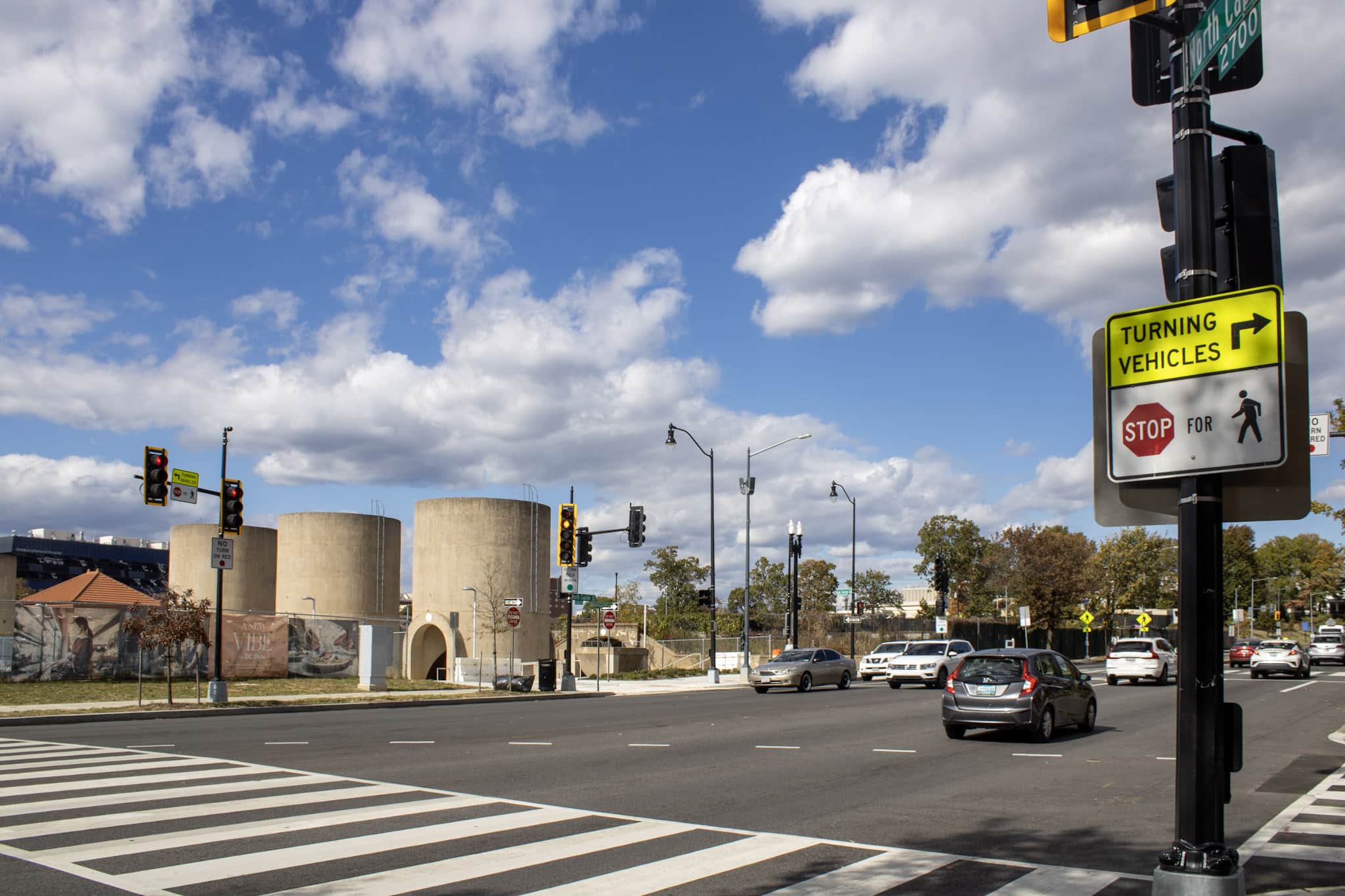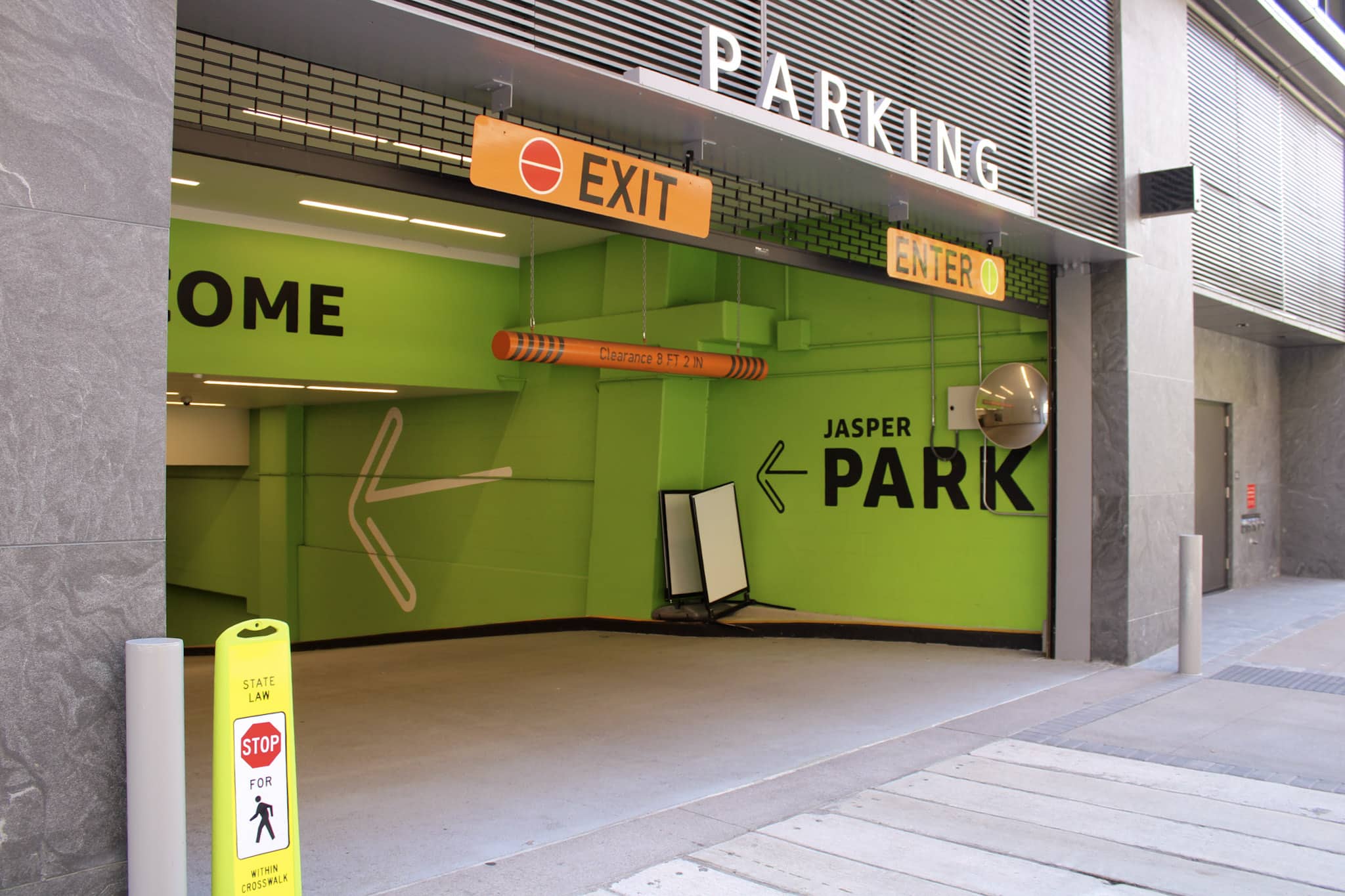
The Hidden Impact of Parking Garage Design
Most of us don’t think much about parking garages until we’re frustrated by one. We’ve all experienced the tight corner that scrapes our mirror, the confusing layout that leaves us circling endlessly, or the backup at the exit gate that makes us late for an appointment. These aren’t just minor inconveniences—they’re symptoms of deeper design failures that affect our daily lives.
The reality is that parking infrastructure touches nearly every aspect of urban and suburban life. In a country where the average person spends 17 hours per year searching for parking*, the design of these spaces directly impacts our stress levels, time management, and even our willingness to visit certain places. Yet parking garages remain one of the most overlooked elements of our built environment.
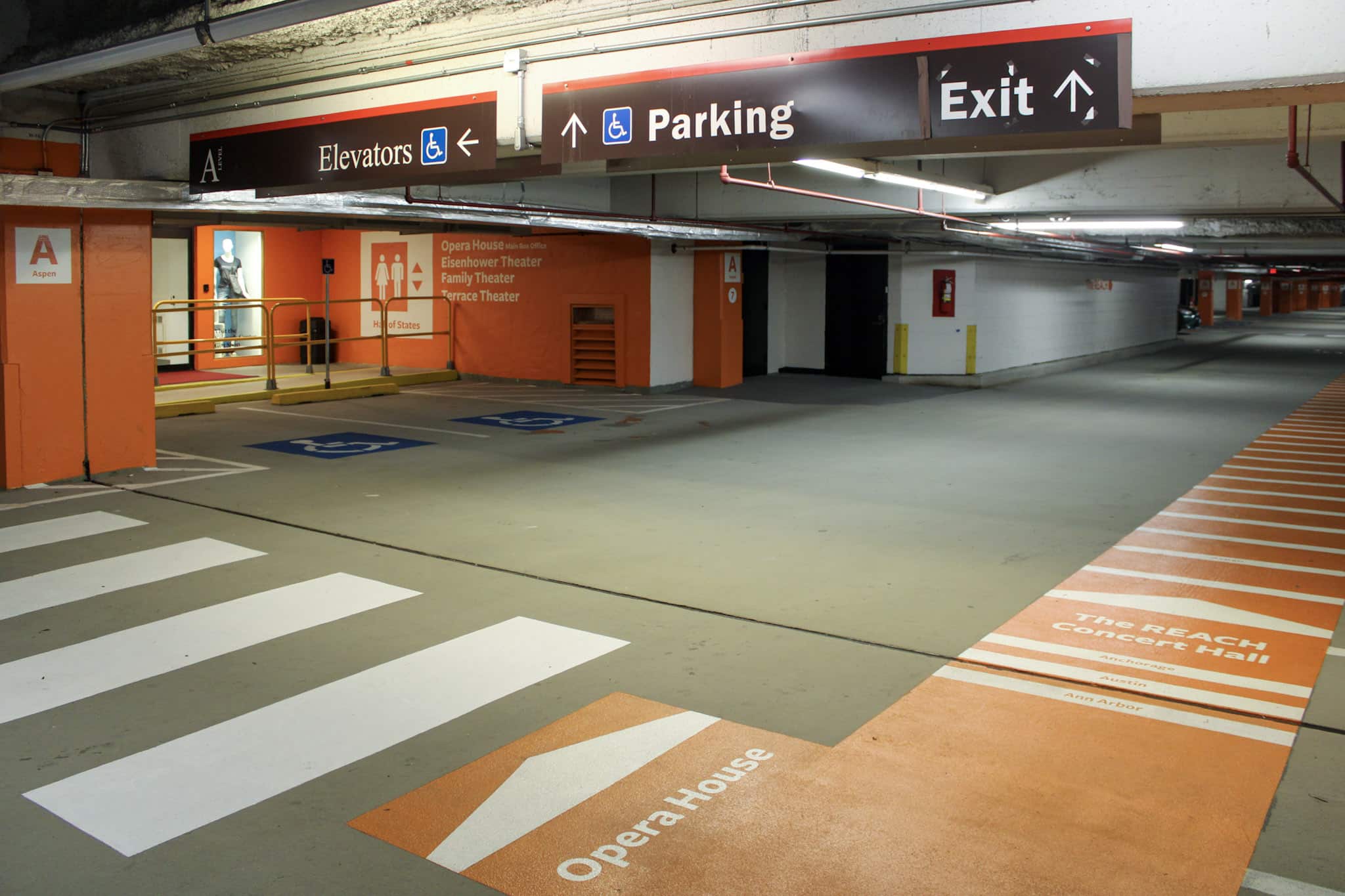
The REACH at the Kennedy Center’s parking garage features clear wayfinding, pedestrian crossings, and ADA pathways.
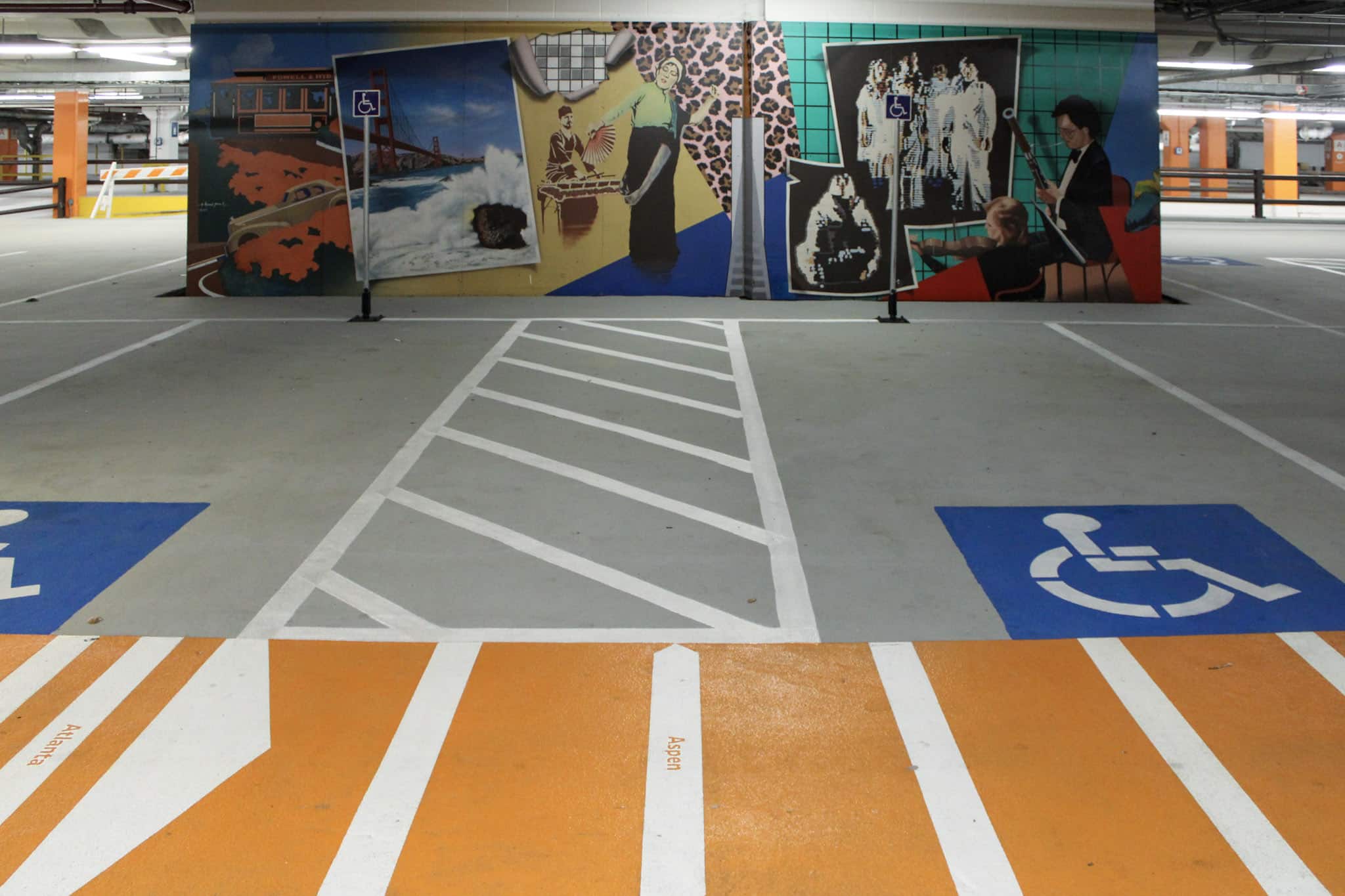
The REACH parking garage prioritizes accessible spaces for visitors and also features artwork throughout the facility.
The Real Cost of Suboptimal Design
When parking garages don’t work well, the consequences ripple outward. Drivers spend more time idling in search of available spaces, increasing emissions and fuel consumption. Poorly designed circulation creates safety hazards for vehicles and pedestrians navigating these garages. Inadequate lighting and confusing layouts contribute to security concerns, particularly for users who may feel vulnerable in isolated parking areas.
From an economic perspective, inefficient parking design directly impacts local businesses. Customers who struggle to find parking or navigate a frustrating garage are less likely to return. In residential buildings, poor parking experiences affect quality of life and property values. For office buildings, parking problems can influence employee satisfaction and retention, or even whether a firm chooses to lease space in the first place.
The Human Experience of Space
Have you ever noticed how a well-designed parking garage can actually feel pleasant? Natural lighting, clear sightlines, intuitive wayfinding, and appropriate space dimensions create an environment that reduces stress rather than adding to it. The difference isn’t accidental. It’s the result of thoughtful design that considers human behavior and psychology.
Consider the varied needs that parking garages must serve. A retail shopper who visits once needs clear, intuitive navigation. A resident who returns daily benefits from consistent, predictable spaces. Office workers develop routines but need flexibility for visitors and deliveries. Each use pattern requires different design solutions, yet many garages are built with a one-size-fits-all approach.
Evolving from Convenience to Community Function
For too long, parking has been treated as a necessary evil—something to minimize rather than optimize. This “predict and provide” mentality has led to oversized facilities in some areas and chronic shortages in others. More problematically, it has resulted in garages that prioritize fitting the maximum number of cars into the minimum space, with little consideration for how people actually use these facilities.
Modern parking design requires a more nuanced approach. As our transportation needs evolve—with electric vehicles requiring charging infrastructure, micro-mobility options like e-bikes and cargo bikes needing secure storage, and delivery services changing how goods move through urban spaces—parking facilities must adapt. Traditional bicycles also play a crucial role in this ecosystem, with bike storage areas typically located within parking garages themselves. This creates a complex interaction between cyclists, vehicles, and pedestrians all sharing the same space, requiring thoughtful design to ensure safe navigation for all users. The garages built today will serve our communities for decades; shouldn’t they be designed to accommodate these changing needs and multi-modal interactions?
When parking design works well, it enables other activities to thrive. Businesses benefit from customers who can easily access them. Cultural venues can focus on their programming rather than managing parking complaints. Residential communities can maintain harmony when parking doesn’t become a source of conflict.
In many urban areas, policymakers are rethinking parking requirements entirely. Some cities have eliminated parking minimums, while others have implemented parking maximums. These policy shifts recognize that excessive parking can actually harm communities by encouraging car dependence and consuming valuable urban land. However, the parking that does exist becomes even more important—it must function efficiently and serve multiple community needs.
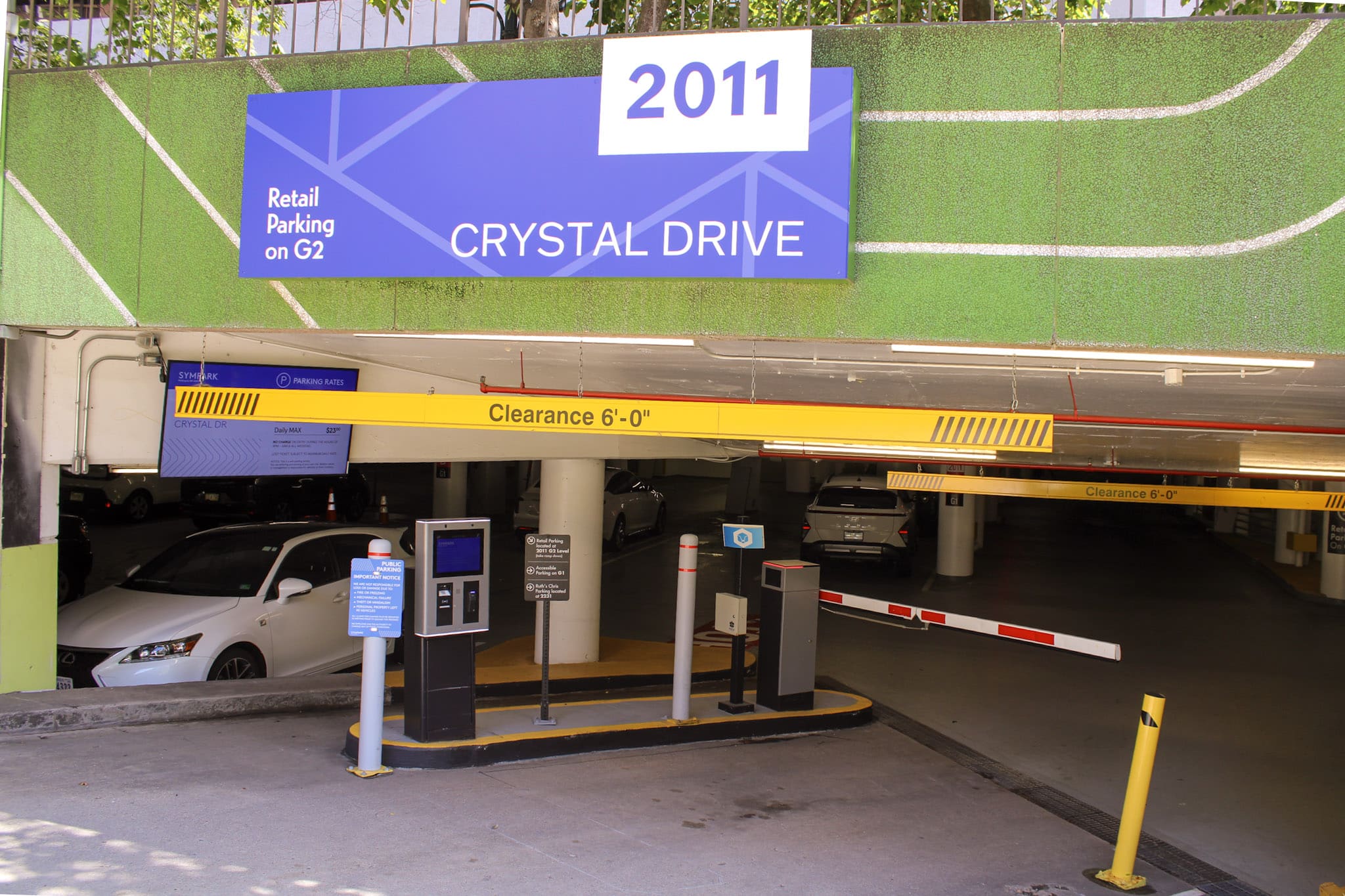
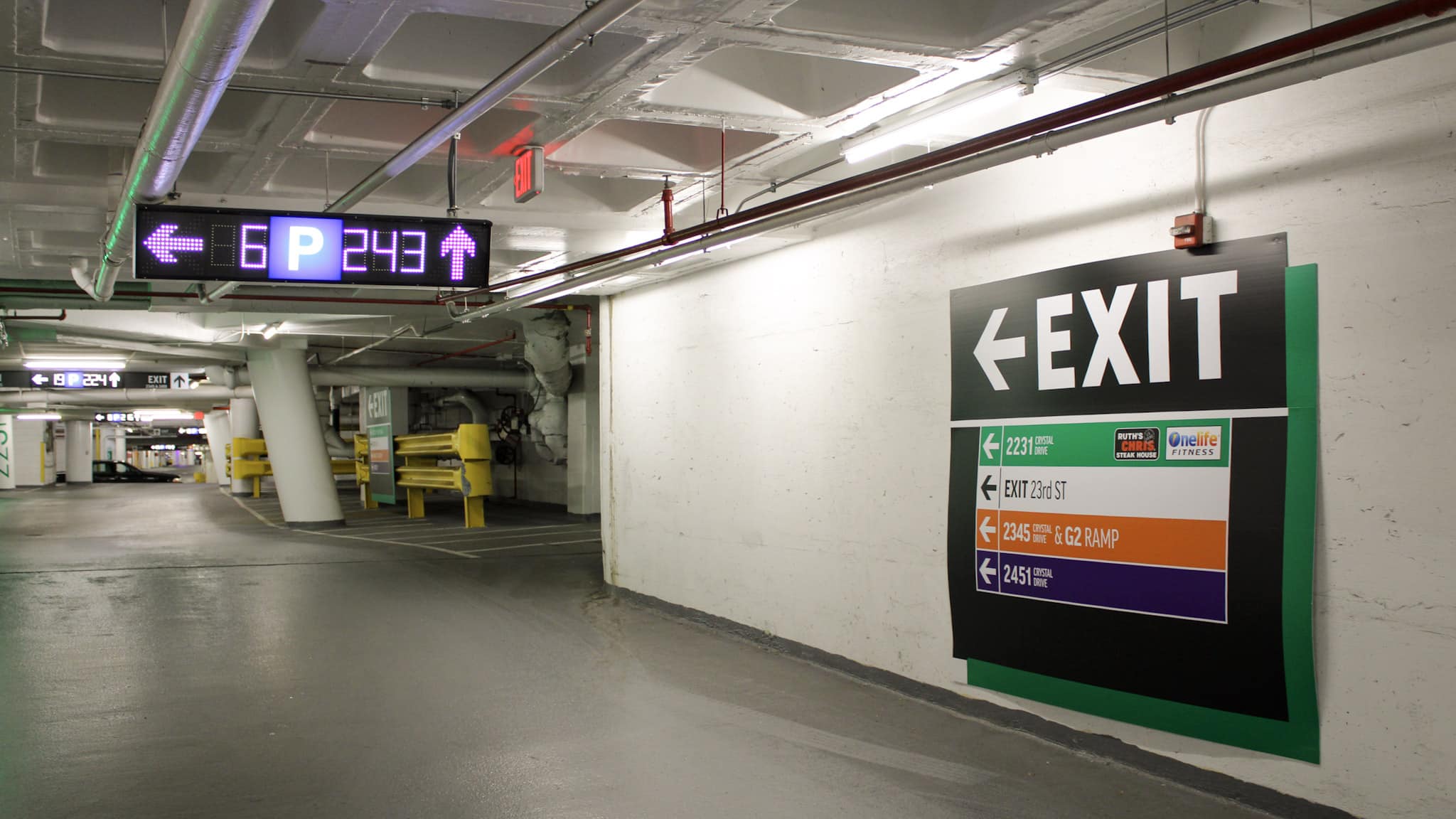
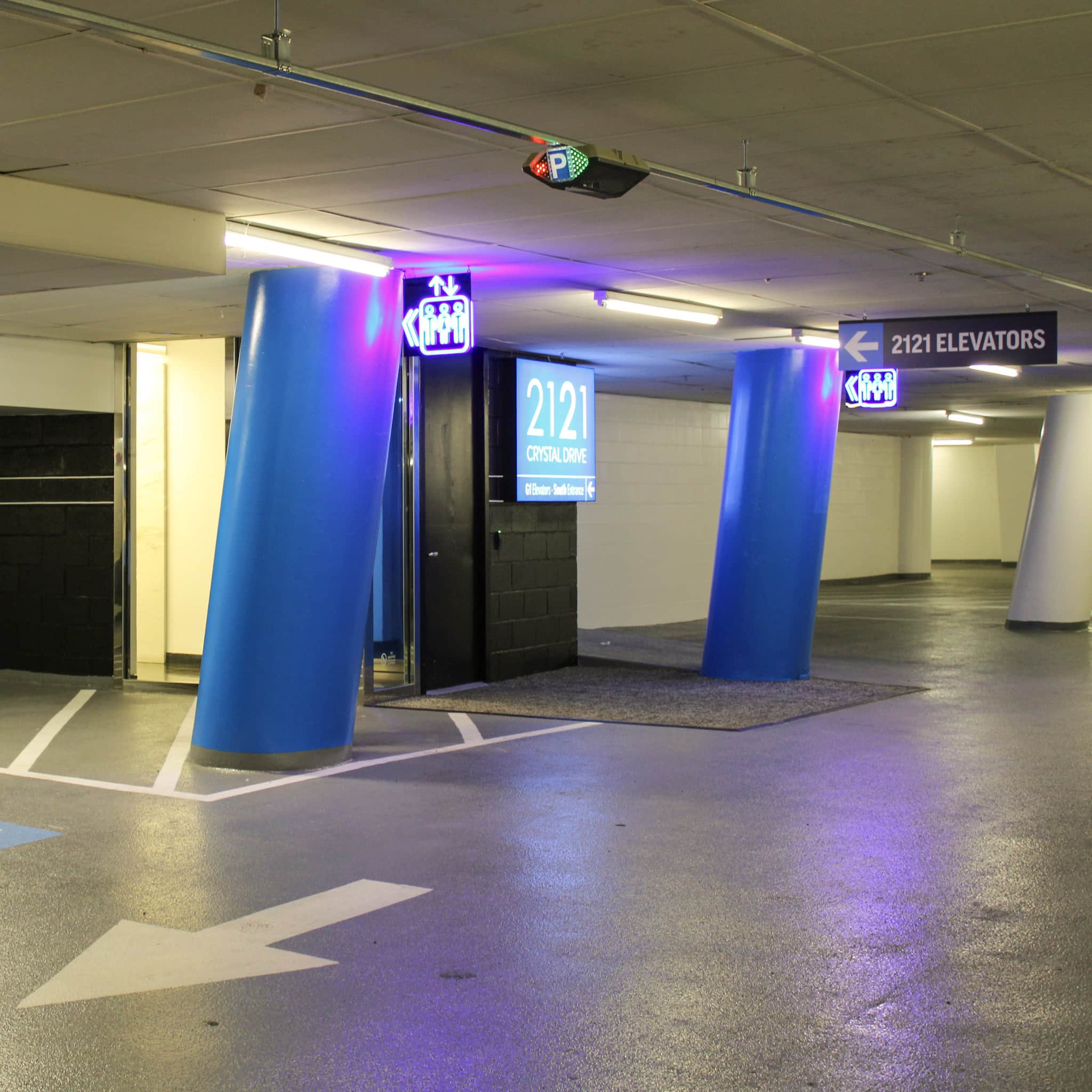
The Crystal Parks garage has bike access to the left of the gate arm at the 2011 Crystal Drive entrance, with wayfinding singage, circulation control, and digital parking availability indicated throughout.
Learning from Our Spaces
The most valuable insights about parking design come from observing how people actually use these spaces. Why do drivers consistently avoid certain areas of a garage? Where do bottlenecks form during peak times? How do different user groups navigate the same space differently?
This observational approach reveals that many parking problems aren’t about having too few spaces—they’re about poor space utilization caused by design flaws. Columns placed without considering turning radii, access points that create conflicts between entering and exiting traffic, or signage that confuses rather than clarifies. These issues compound over time as drivers develop workarounds that create new problems.
As we look ahead, the parking facilities we design today will need to serve functions we’re only beginning to imagine. Autonomous vehicles may change how we think about parking entirely. Climate change is pushing us toward solutions that reduce single-occupancy vehicle trips. Urban density is increasing pressure to make every square foot count.

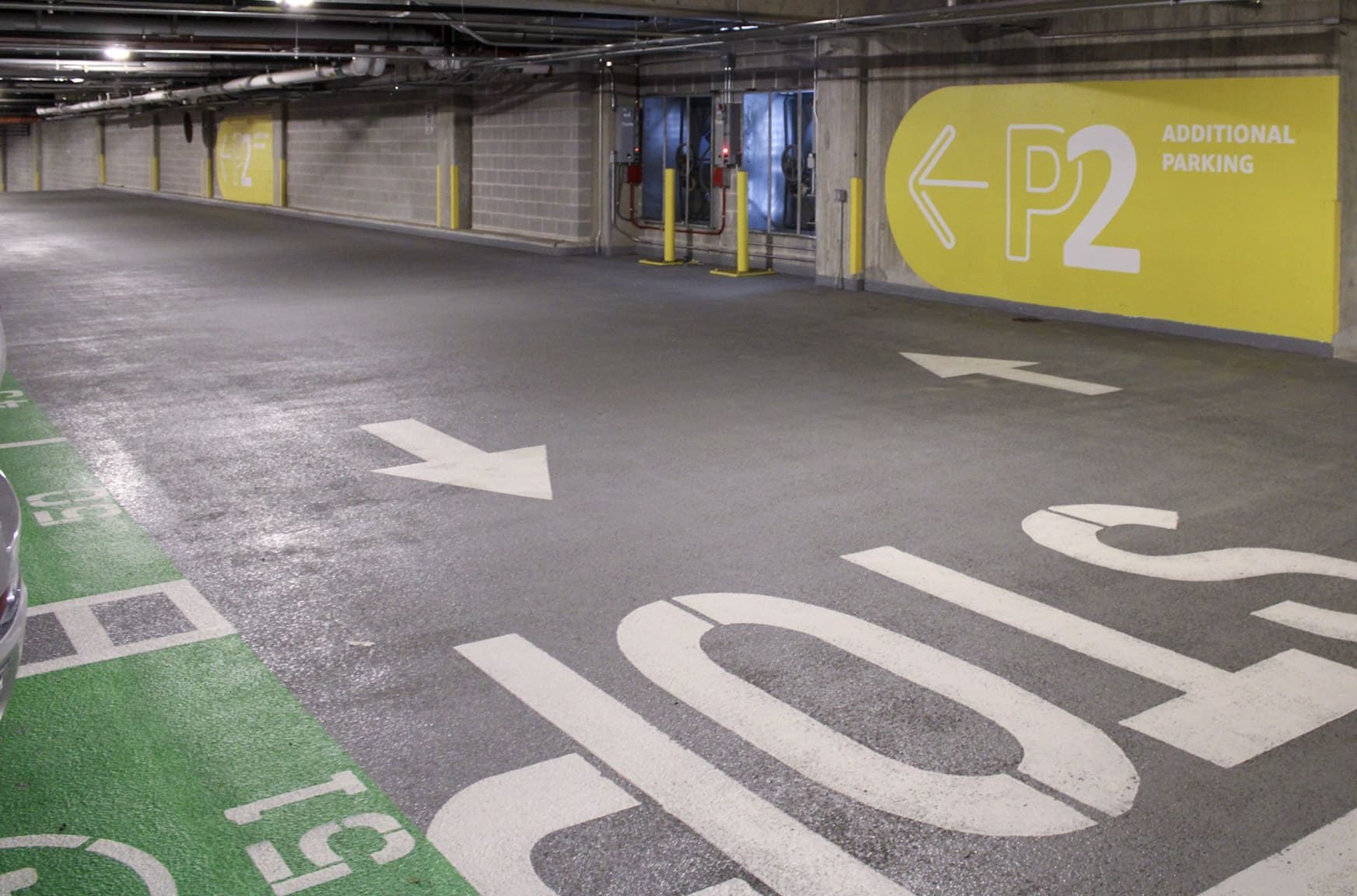
The parking facility at Met Park incorporates safety features for drivers and pedestrians alike, including entrance/exit signage and convex safety mirrors. Parking for e-vehicles is also clearly marked with green paint.
The Path Forward
Transforming how we think about parking design requires recognizing these spaces as integral parts of our transportation network and community infrastructure. It means involving users in the design process, learning from existing facilities, and prioritizing function alongside efficiency.
Most importantly, it means moving beyond the assumption that parking is just about storing cars. These spaces are part of people’s daily journeys—transitions between transportation modes, places where we gather our thoughts before entering a building, and spaces that either add stress to our lives or provide a moment of calm efficiency.
When parking design is right, we create facilities that serve not just individual needs but community goals. We enable economic activity, support sustainable transportation choices, and contribute to the overall livability of our urban spaces.
At Gorove Slade, our transportation engineering expertise focuses on optimizing the critical elements that make parking facilities work seamlessly. Our services include signage and wayfinding systems, circulation pattern analysis, functional layout optimization, turning radius and maneuvering assessments, strategic access control placement, and comprehensive queuing analysis. We collaborate with architects and developers to ensure that every aspect of vehicle and pedestrian movement is carefully planned and integrated into the broader design vision.
When you partner with Gorove Slade for your parking garage needs, your project benefits from decades of expertise and cutting-edge design solutions that prioritize sustainability, accessibility, and community well-being. Ready to optimize your parking facility? Contact our Design team to discuss how we can enhance your garage’s functionality, safety, and user experience while supporting your broader transportation and mobility goals.
*Source: Stats and Spots: The Surprising Numbers Behind Parking and Mobility
